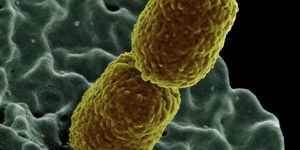The Dangers of Pollution Exposure While in the Womb
The negative health consequences that develop as a result of exposure to pollution in the environment starts before birth, a new study shows. From the American Heart Association, researchers demonstrate the dangers posed to unborn children when their mothers are exposed to pollution.
The researchers found that fetal air pollution exposure during the third trimester increased the risk of high blood pressure during childhood, raising issues about public health and the environment.
"Ours is one of the first studies to show breathing polluted air during pregnancy may have a direct negative influence on the cardiovascular health of the offspring during childhood," explained senior author Noel T. Mueller, PhD, MPH. "High blood pressure during childhood often leads to high blood pressure in adulthood and hypertension is the leading cause of cardiovascular disease."
In his study, Mueller defines air pollution as “fine particulate matter of 2.5 microns or less (PM2.5).” This is the type of pollution that aggregates as a result of cars and other vehicles and the burning of oil, coal, and biomass.
In the past, scientists drew similar conclusions that blood pressure levels in both children and adults were negatively affected by air pollution exposure.
In the new study, researchers collected data from 1,293 mothers and their children from the Boston Birth Cohort study. They used the residential location for each mother and Environmental Protection Agency (EPA) information to quantify air quality and pollution exposure levels. From age three to nine, researchers collected blood pressure readings at each childhood physical examination.
Researchers qualified systolic blood pressure as “high” if it was in the highest ten percent for children the same age on national data. Systolic blood pressure represents the pressure in the blood vessels during heart beats - as opposed to diastolic blood pressure, which accounts for the pressure in the blood vessels when the heart rests between beats. The Centers for Disease Control and Prevention (CDC) lists a healthy blood pressure as approximately 120 (systolic) over 80 (diastolic).
After accounting for potentially confounding factors (birth weight, maternal smoking habits), researchers made a few conclusions about the impact of maternal pollution exposure during pregnancy. Children exposed to PM2.5 pollution during the third trimester were 61 percent more likely to have elevated systolic blood pressure. Additionally, they confirmed that a woman’s PM2.5 pollution exposure before pregnancy did not affect offspring’s blood pressure independently.
"These results reinforce the importance of reducing emissions of PM2.5 in the environment, Mueller said. “Not only does exposure increase the risk of illness and death in those directly exposed, but it may also cross the placental barrier in pregnancy and effect fetal growth and increase future risks for high blood pressure.”
“We need regulations to keep our air clean, not only for the health of our planet but also for the health of our children,” Mueller concluded.
The present study was published in the journal Hypertension.
Sources: CDC, American Heart Association









